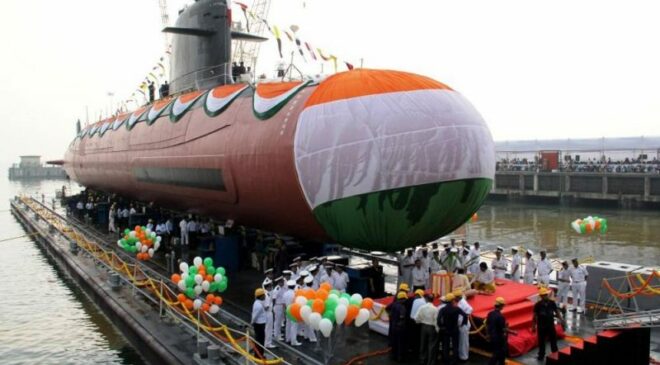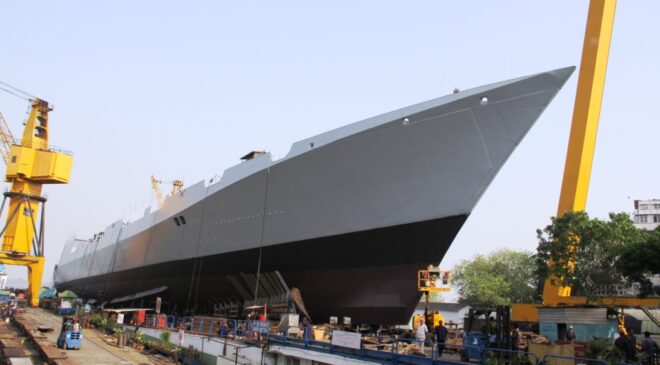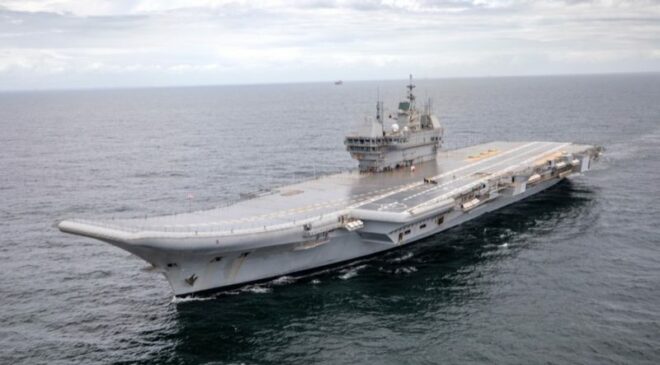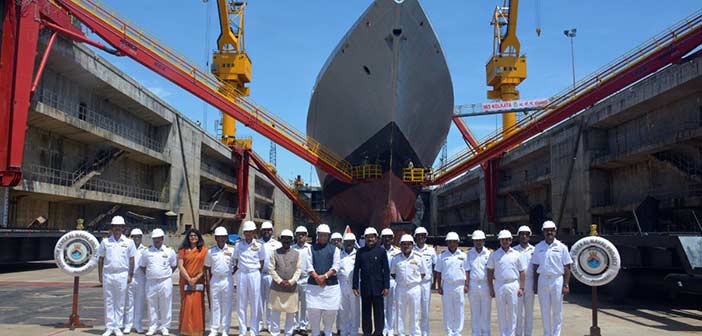In this section:
Over the past twenty years, the Indian Navy has undertaken a vast effort to modernize and expand its format. Several emblematic programs were thus launched during this period, such as P75 for 6 conventional submarines of the Kalvari class derived from the Scorpène of Naval Group, the 45.000 ton aircraft carrier INS Vikrant or the Project 15A destroyers of the Kolkata class .
Although efforts and budgets have undoubtedly increased, the Indian Navy nevertheless suffers from two significant handicaps. The first is linked to the difficulty in the country in rapidly advancing major programs, mobilizing significant funds.
Obstacles hindering the progress of the Indian Navy
Numerous obstacles, whether political or industrial, often delay or even derail critical defense programs. This is how the P-75i program, supposed to allow the construction of six new anaerobic propulsion submarines, has still not selected its main service provider, whileit was launched four years ago.
The second of the handicaps is none other than the dazzling, and for once controlled, growth of the Chinese fleet, much more quickly than it itself can progress. This creates an obvious magnifying glass effect on its own difficulties, and tends to increase the political tensions surrounding these security issues.

Indeed, although frequently presented as aligned with China within the BRICS, New Delhi is above all directly threatened by the rise in power of the People's Liberation Army, whether on the Himalayan highlands, places of recurring tensions between the two countries, as well as about Beijing's intensive military support for Islamabad, India's sworn enemy since its creation.
The challenge of the Chinese and Pakistani navies
The Indian Navy sees itself directly threatened by a Chinese Navy whose format is evolving as quickly as its modernization, and which also actively allows its Pakistani ally to benefit from its own advances.
Thus, in recent years, the Pakistani Navy has ordered, in addition to the four Barbur-class corvettes derived from the Turkish Ada, eight AIP Type 039A submarines forming the Hangor class, as well as four anti-submarine frigates. Type 054 AP forming the Tughril class.
In fact, the combat ships currently forming the Indian Navy are insufficient to meet the security challenges in the Bay of Bengal facing China and in the Arabian Sea facing Pakistan.

This is how the current format of 127 ships, must be increased to 2030 ships by 160, an increase of 25% planned for the next seven years, and to reach 175 naval units, or even 200, in 2035.
68 military ships on order to date
To achieve this, Indian shipyards can now rely on a particularly full order book, with 68 naval units officially on order to date.
It goes from 7.400 ton Visakhapatnam class destroyer (2 units delivered, 2 under construction) to the anti-submarine corvettes of the Anti-Submarine Warfare Shallow Water Craft (ASW-SWC) of 700 tonnes (16 units), through the 7 stealth frigates of 6.500 tonnes of the Nilgiri class, and the 5 large support ships of 44.000 tonnes currently designated under the HSL class name.
However, most of these ships will only replace units already in service and having reached their limits, such as the Raiput class destroyers or the 7 Veer class missile corvettes, which entered service in the 80s. .

It is therefore essential today for the Indian Navy to quickly launch certain critical programs, such as the AIP P75i submarine program, but also the destroyer, frigate, corvette and OPV programs which must take over from the current classes. ordered.
Additional Kalvari-class submarines and Vikrant-class aircraft carriers
This gap between operational necessity and programmatic reality is therefore at the heart of the future order 3 additional Scorpene submarines announced by Narendra Modi on the occasion of his official visit to France for the July 14 celebrations.
It is this pressure which, in part, weighs today on the future of the new Indian aircraft carrier, the admiralty preferring build a new 45.000 ton INS Vikrant class ship, rather than a new, therefore long and expensive, 65.000-ton aircraft carrier equipped with catapults, as previously mentioned.
This is also the reason which pushes the Indian Navy to favor, among all future programs, the construction ofa fleet of nuclear attack submarines, an area in which France's help has apparently been requested, this having weighed in the order of the 3 additional Scorpene to come up.

In any case, if the Indian Navy actually wants to take up the Chinese challenge, and its fleet of more than 360 ships today, more than 500 in 2035, it will have to find the means to overcome all difficulties, particularly political ones. and industrial, which considerably hamper its development.
It should be noted, in this respect, that these same difficulties also affect the Indian air and land forces, with all armies engaged in a race against time to keep up with Beijing and Islamabad who, for their part, advance at a forced march.
Article from September 18 in full version until November 18


[…] The Indian Navy has undertaken, over the past twenty years, a vast effort to modernize and expand its format. Several emblematic programs […]